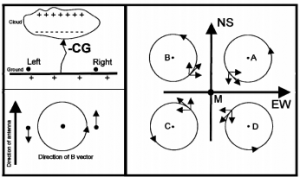Atmospheric Research
Volume 91, Issues 2-4, February 2009, Pages 184-187
Zenon Nieckarz a, b, Andrzej Kułak c, Stanisław Zięba c, Marek Kubicki d, Stanisław Michnowski d and Piotr Barański d
a) Institute of Physics, Jagiellonian University, Reymonta 4, 30-059, Kraków, Poland
b) Institute of Geography and Spatial Management, Jagiellonian University, Gronostajowa 7, 30-387, Kraków, Poland
c) Astronomical Observatory, Jagiellonian University, Orla 171, 30-244, Kraków, Poland
d) Institute of Geophysics, Polish Academy of Sciences, Ks. Janusza 64, 01-452, Warszawa, Poland
Abstract
This work presents the results of a comparison between the global storm activity rate IRS and electric field intensity E0Z. The permanent analysis of the IRS may become an important tool for testing Global Electric Circuit models. IRS is determined by a new method that uses the background component of the first 7 Schumann resonances (SR). The rate calculations are based on ELF observations carried out in 2005 and 2006 in the observatory station “Hylaty” of the Jagiellonian University in the Eastern Carpathians (Kułak, A., Zięba, S., Micek, S., Nieckarz, Z., 2003. Solar variations in extremely low frequency propagation parameters: I. A two-dimensional telegraph equation (TDTE) model of ELF propagation and fundamental parameters of Schumann resonances, J. Geophys. Res., 108, 1270, doi:10.1029/2002JA009304). Diurnal runs of the IRS rate were compared with diurnal runs of E0Z amplitudes registered at the Earth’s surface in the Geophysical Observatory of the Polish Academy of Sciences in Świder (Kubicki, M., 2005. Results of Atmospheric Electricity and Meteorological Observations, S. Kalinowski Geophysical Observatory at Świder 2004, Pub. Inst. Geophysics Polish Academy of Sciences, D-68 (383), Warszawa.). The days with the highest values of the correlation coefficient (R) between amplitudes of both observed parameters characterizing atmosphere electric activity are shown. The seasonal changes of R, IRS and E0Z are also presented.
